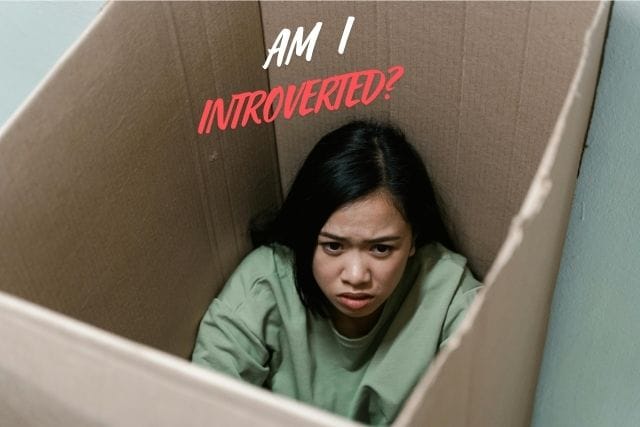Autism is often misunderstood, leading to the spread of several myths and misconceptions. One of the most persistent of these myths is that all autistic individuals are introverted. This stereotype oversimplifies the complex and diverse nature of autism and does not reflect the reality of the experiences of many autistic people. In this article, we will examine the myth that all autistic people are introverted and explore the diverse ways in which people on the autism spectrum express themselves socially.
Table of Contents
Understanding Autism: A Spectrum of Diversity
Autism Spectrum Disorder (ASD) is a developmental disorder that affects how individuals perceive and interact with the world. It is considered a “spectrum” because it includes a wide range of characteristics and abilities. Some people with autism may have significant challenges with communication and social interaction, while others may be more verbal and have a higher level of social functioning.
The central point is that autism manifests differently in every individual. Just as neurotypical people (those without autism) have varied personalities and social preferences, so too do individuals with autism. Some autistic people may indeed be more introverted, but that is by no means a universal trait. This is where the myth that “all autistic people are introverted” falls short, as it ignores the wide range of personalities and social preferences that exist within the autism spectrum.
The Myth of Universal Introversion: Why It’s Incorrect
The myth that all autistic people are introverted stems from the idea that they are shy or disinterested in socializing. Introversion is a personality trait that is characterized by a preference for solitary activities or interactions in small groups. While it is true that some autistic people may feel more comfortable in quiet, low-stimulation environments, this does not mean they inherently dislike socializing.
In fact, many autistic individuals enjoy social interactions and seek out relationships, but they may engage in them in different ways than neurotypical individuals. Autistic people may experience social anxiety, sensory sensitivities, or difficulties in reading social cues, which can make social interactions overwhelming or challenging. This does not mean they don’t desire connection. Rather, they may need more time or a different approach to feel comfortable in social settings.
The Diverse Social Needs of Autistic Individuals
Social interaction is a vital aspect of human life, but for people on the autism spectrum, socializing can sometimes be difficult. Autistic people often face challenges such as difficulty understanding body language, facial expressions, or tone of voice. These non-verbal cues are crucial in typical social interactions, and difficulties with interpreting them can create feelings of isolation or frustration.

However, these challenges do not make all autistic people introverted. Instead, some may simply prefer to engage in different forms of communication or in specific settings. For example, many autistic individuals excel in one-on-one conversations where they can have deeper, more focused interactions, rather than large social gatherings, which might feel chaotic and overstimulating.
Furthermore, some autistic people are very social but may engage in repetitive or focused conversations about their interests. This behavior, which is often mistaken for being socially awkward or isolating, is a reflection of their passion and enthusiasm for the subject matter, rather than a desire to avoid socializing altogether. Many autistic people also enjoy engaging with others who share their specific interests, such as in communities or groups focused on particular hobbies or subjects.
Extraversion in Autistic Individuals: Challenging the Stereotype
While introversion is one way that autism may manifest, there are many autistic people who are extroverted and thrive in social environments. These individuals enjoy engaging with others and often seek out social experiences, such as parties, group activities, or community events. However, their way of socializing may differ from that of neurotypical people.
Extraverted autistic individuals may find certain aspects of social interaction challenging, such as understanding unspoken social rules or dealing with sensory overload in crowded places. Despite these challenges, they still enjoy connecting with others and may develop strong friendships or participate actively in group activities. Their social behavior might appear different because they may have unique ways of expressing themselves, such as repeating certain topics or using a specific mode of communication.
It is essential to acknowledge that extroversion is not inherently tied to neurotypicality, and autistic people can be just as outgoing and socially engaged as anyone else. The important distinction is that the way autistic people express extraverted behaviors may be less conventional, but it is no less valid or meaningful.
The Impact of Social Expectations on Autistic People
The widespread belief that all autistic individuals are introverted can have serious consequences. This stereotype can result in social exclusion or misunderstanding, as others may assume that an autistic person does not want to interact socially, even when they do. For example, a person who is sensitive to sensory stimuli may avoid large social gatherings, not because they dislike people, but because the environment is overwhelming. However, if others mistakenly assume that the person is simply introverted, they may exclude them from social activities, further perpetuating isolation.
Similarly, when an autistic person exhibits social behaviors that do not conform to social norms, such as repeating phrases or talking at length about a particular interest, they may be misunderstood as lacking social skills or being socially awkward. This can lead to feelings of alienation and the belief that their way of interacting is unacceptable. In reality, these behaviors are often part of how they engage with others and can be interpreted as a desire for connection rather than avoidance.
Breaking down these misconceptions is vital for fostering a more inclusive and supportive environment for autistic individuals. Understanding that social preferences among autistic people vary—just as they do in neurotypical individuals—can help reduce stigma and encourage greater acceptance.

Creating an Inclusive Social Environment for All
To support autistic individuals, it is crucial to create social environments that accommodate different needs and preferences. Some autistic people may prefer quieter, more structured interactions, while others may thrive in lively social settings. Providing options and flexibility allows individuals to choose the types of social engagement that feel most comfortable to them.
It is also important to foster understanding among neurotypical individuals, helping them appreciate the diversity of communication styles and social needs within the autism spectrum. For instance, creating spaces where people can engage in conversation based on shared interests, or where sensory sensitivities are taken into account, can allow autistic people to feel more included and less isolated.
By recognizing the full spectrum of social preferences, we can create a society where autistic individuals are not expected to fit into a narrow social mold, but are instead allowed to express their individuality in ways that are authentic to them.
Conclusion: The Importance of Recognizing the Diversity of Autistic Individuals
The myth that all autistic people are introverted is a simplification that overlooks the rich diversity of experiences within the autism spectrum. While some autistic individuals may be introverted, others are extroverted and enjoy socializing just as much as anyone else. What matters is recognizing that social preferences vary widely from person to person, and the desire for connection is universal, regardless of where someone falls on the autism spectrum.
By challenging this stereotype and embracing the diversity of social behaviors, we can create a more inclusive world for autistic people, where they are free to engage with others in ways that are meaningful, strong and comfortable for them.
Discover also our Categorie: Myth or Fact
Additional Resources:
- Autism Speaks: https://www.autismspeaks.org
- National Autistic Society: https://www.autism.org.uk
- Autistic Self Advocacy Network: https://autisticadvocacy.org
- CDC – Centers for Disease Control and Prevention: https://www.cdc.gov/ncbddd/autism/facts.html
These resources provide comprehensive information on autism, offering insights into the realities of living with autism while challenging the myths and fostering a more inclusive society.

Pingback: Enhancing Autistic Well-Being: Support, Understanding, and Inclusion for a Fulfilling Life
Pingback: Helping Parents of Autistic Children: Isolation Solutions That Work
Pingback: Autism Shirt – Buy Autism Awareness Shirts &Show Your Support
Pingback: Homeschooling Special Needs Students: Tips and Strategies
Pingback: Can Autistic People Live Alone ? Guide for Autistic Adults
Pingback: How Autistic Individuals Can Make Friends: A Helpful Guide